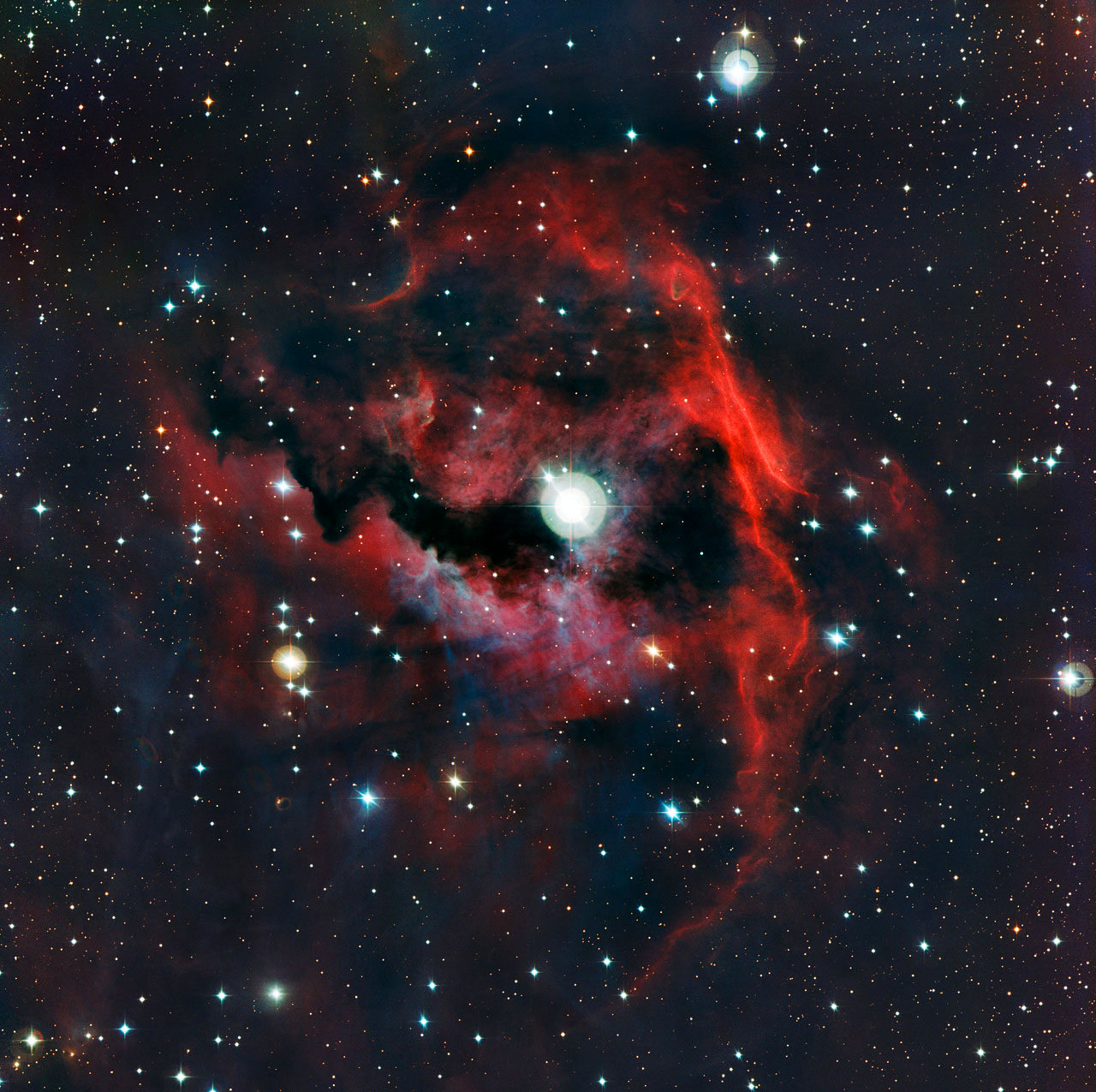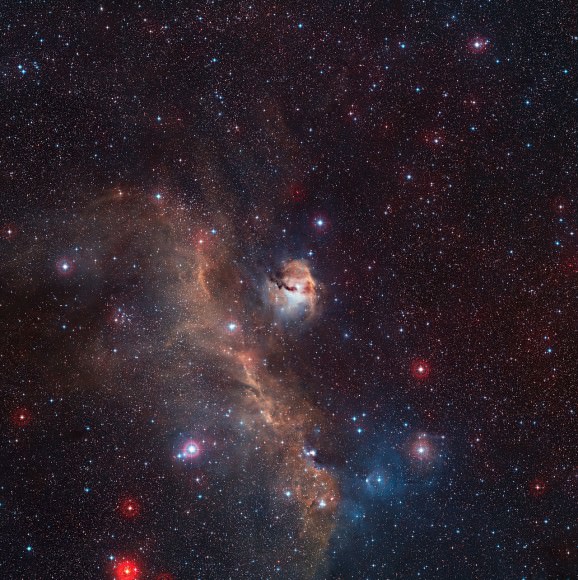The head and “eye” of the Seagull Nebula (ESO)
This colorful new image from ESO’s La Silla Observatory highlights the heart of a shining stellar nursery located between the constellations Monoceros and Canis Major. Officially named Sharpless 2-292, the cloud of gas and dust forms the “head” of the Seagull Nebula (IC 2177) and gets its glow from the energy emitted by the young, bright star within its “eye”.
A wide-angle image of the Seagull Nebula shows the soaring birdlike shape that gives it its nickname. The cloud seen above forms the gull’s head.
A wide-field view of the Seagull Nebula from the ESO’s Digitized Sky Survey 2 (ESO/Digitized Sky Survey 2. Acknowledgement: Davide De Martin)
The wings of this gull span an impressive 100 light-years from tip to tip. A birthplace for new stars, the nebula is located within our galaxy about 3,700 light-years away.
For an idea of how far that is, if the distance between the Sun and Earth were scaled down to 1 inch (2.5 cm) and you were standing in New York City, the stars in the Seagull Nebula would be in Paris, France (considering the most direct flight route.)
Powerful radiation from young stars causes the surrounding hydrogen gas to glow with a red color. Light from the hot blue-white stars also gets scattered off tiny dust particles in the nebula to create a blue haze.
Read more on the ESO website here.
2012 marks the 50th anniversary of the founding of the European Southern Observatory (ESO). ESO is the foremost intergovernmental astronomy organization in Europe and the world’s most productive ground-based astronomical observatory. It is supported by 15 countries: Austria, Belgium, Brazil, the Czech Republic, Denmark, France, Finland, Germany, Italy, the Netherlands, Portugal, Spain, Sweden, Switzerland and the United Kingdom.



Beautiful! Thanks UT!